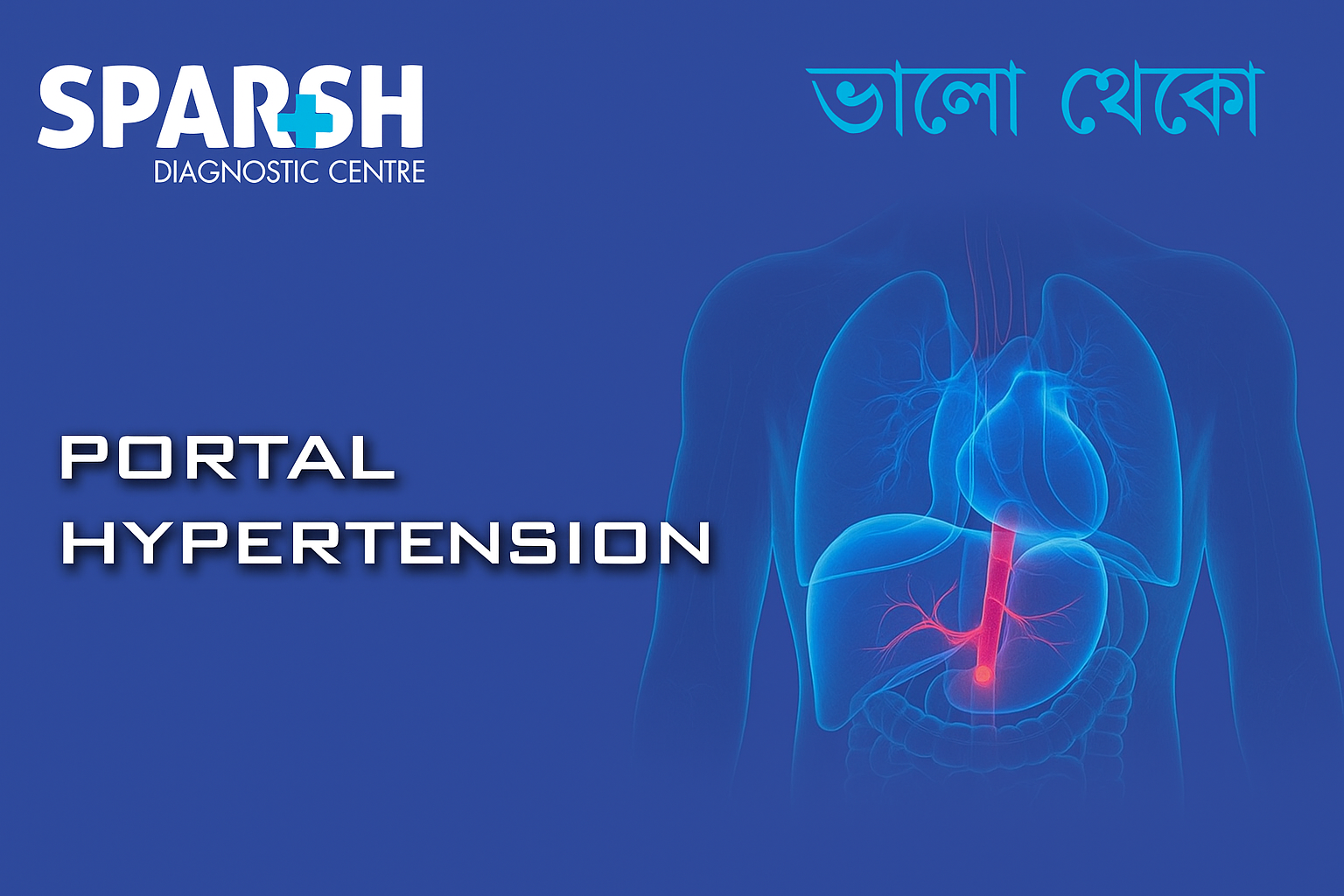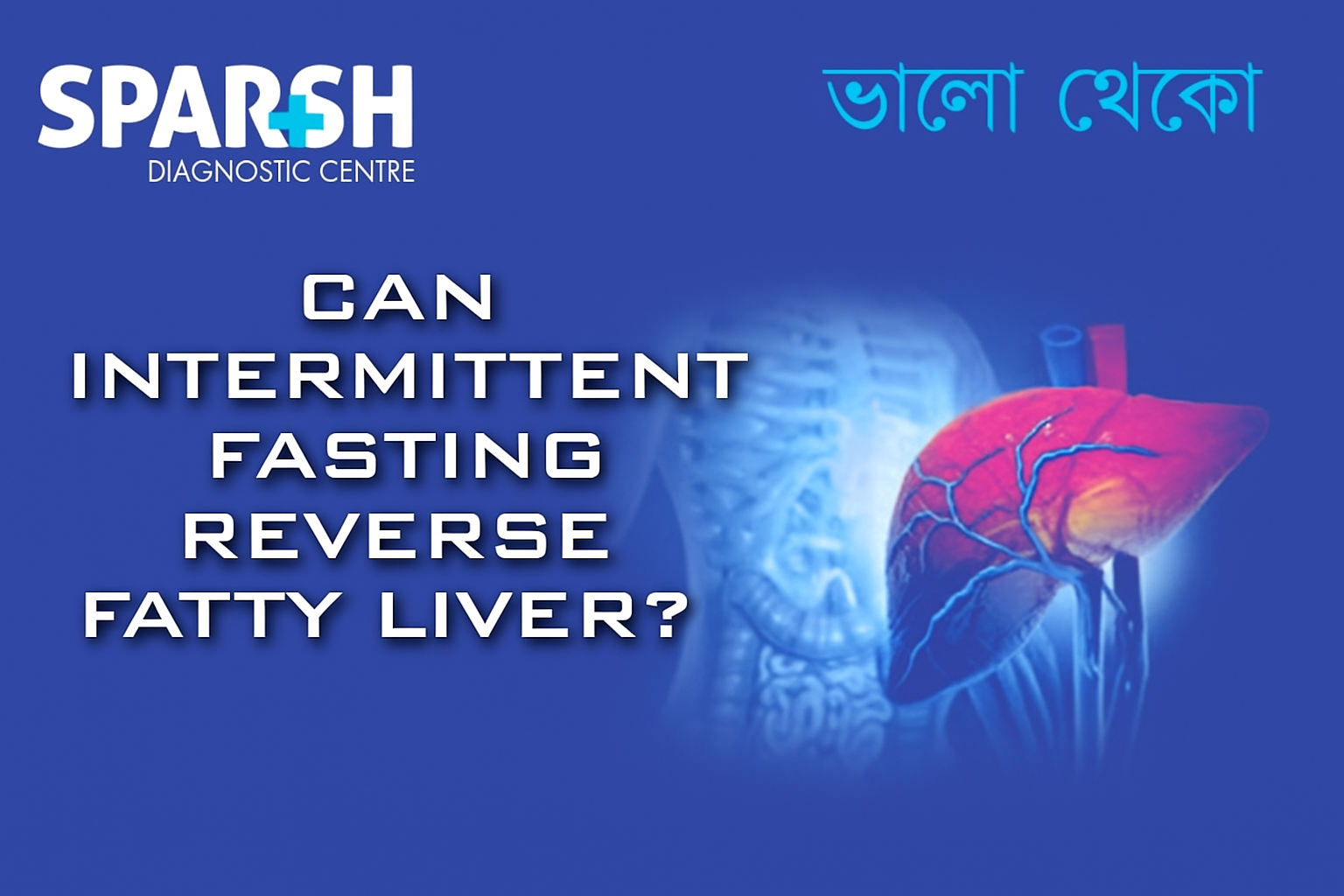Portal Hypertension is a potentially serious condition marked by elevated blood pressure within the portal venous system, which comprises the veins coming from the stomach, intestine, spleen, and pancreas that merge into the portal vein delivering blood to the liver. This rise in pressure typically occurs due to obstruction or resistance to blood flow through the liver, often resulting from liver cirrhosis.
Left untreated, portal hypertension can cause life-threatening complications such as variceal bleeding, ascites, and hepatic encephalopathy. Understanding this condition is crucial for timely diagnosis and effective management. In this blog, we will cover the causes, risk factors, signs, diagnostic methods, treatments, and preventive measures for portal hypertension.
What Is Portal Hypertension?
The normal pressure in the portal vein ranges between 5 and 10 mmHg. Portal Hypertension is defined as a portal venous pressure greater than 12 mmHg or a hepatic venous pressure gradient (HVPG) of more than 5 mmHg.
As pressure builds up, blood finds alternate pathways, leading to varices (enlarged veins), splenomegaly, and fluid leakage into the abdominal cavity (ascites).
Causes of Portal Hypertension
Portal Hypertension is categorized based on the site of obstruction:
1. Pre-hepatic Causes (before blood enters the liver)
Congenital portal vein anomalies
2. Intra-hepatic Causes (within the liver)
Most common cause overall
Cirrhosis of the liver (due to hepatitis B/C, alcohol, NAFLD)
Congenital hepatic fibrosis
Nodular regenerative hyperplasia
3. Post-hepatic Causes (after blood exits the liver)
Budd-Chiari Syndrome (hepatic vein thrombosis)
Constrictive pericarditis
Right heart failure
Risk Factors
Chronic liver disease (especially cirrhosis)
Alcohol use
Hepatitis B or C infection
Obesity and non-alcoholic fatty liver disease (NAFLD)
Inherited or acquired clotting disorders
Parasitic infections (in endemic areas)
Symptoms of Portal Hypertension
Portal Hypertension often develops gradually. Early symptoms may be subtle but can progress to serious complications:
Common Signs and Symptoms
Abdominal swelling (Ascites)
Esophageal or gastric varices
Gastrointestinal bleeding (vomiting blood or black stools)
Fatigue and weakness
Low platelet count
Hepatic encephalopathy (confusion, disorientation)
In children, growth retardation, delayed puberty, and frequent infections may be seen.
Complications of Portal Hypertension
Variceal Bleeding
Life-threatening bleeding from esophageal or gastric varices.Ascites
Fluid accumulation in the abdominal cavity due to portal pressure and low albumin.Hepatic Encephalopathy
Toxin buildup due to impaired liver function affecting brain activity.Hypersplenism
Overactive spleen destroys blood cells, leading to anemia, leukopenia, and thrombocytopenia.Hepatorenal Syndrome
Kidney failure associated with advanced liver disease and portal hypertension.Spontaneous Bacterial Peritonitis (SBP)
Infection in ascitic fluid without a clear source.
Diagnosis of Portal Hypertension
1. Clinical Examination
Signs of ascites, enlarged spleen, or spider angiomas
History of liver disease or alcohol use
2. Blood Tests
Complete blood count (CBC) – often shows low platelets
Coagulation profile
Viral markers for hepatitis B and C
3. Imaging Studies
Ultrasound with Doppler: Assesses portal vein diameter and flow
CT Scan or MRI: Detects cirrhosis, varices, thrombosis, and ascites
Endoscopy: Visualizes and grades esophageal and gastric varices
4. Hepatic Venous Pressure Gradient (HVPG)
Gold standard test to measure pressure gradient between portal vein and hepatic vein
HVPG >10 mmHg indicates clinically significant portal hypertension
Treatment of Portal Hypertension
While portal hypertension itself may not be fully reversible, managing the underlying cause and treating complications is crucial.
1. Lifestyle & Dietary Modifications
Low-sodium diet to reduce ascites
Adequate protein intake (may need adjustment in hepatic encephalopathy)
2. Medications
Non-selective Beta-Blockers
Propranolol, Nadolol
Reduce portal pressure and prevent variceal bleeding
Diuretics
Spironolactone and furosemide to manage ascites
Lactulose or Rifaximin
For treating hepatic encephalopathy
Antibiotics
To prevent SBP in high-risk ascites
3. Endoscopic Procedures
Endoscopic Variceal Ligation (EVL)
Rubber band applied to varices to prevent bleeding
Sclerotherapy
Injection of a sclerosing agent into varices to stop bleeding
4. Interventional Radiology
TIPS (Transjugular Intrahepatic Portosystemic Shunt)
Minimally invasive procedure creating a channel within the liver to bypass high-pressure portal vein and reduce portal pressure
Effective for recurrent variceal bleeding or refractory ascites
5. Liver Transplantation
Only curative option in cases of end-stage liver disease or decompensated cirrhosis
Portal Hypertension in Children
In children, non-cirrhotic portal hypertension is more common than in adults and is often caused by extrahepatic portal vein obstruction (EHPVO) or congenital liver fibrosis.
Symptoms in Children
Splenomegaly
Growth retardation
Upper GI bleeding
Treatment in children typically includes:
Endoscopic therapy
Beta-blockers
Shunt surgeries in selected cases
Prevention Strategies
While portal hypertension itself is often secondary to other conditions, prevention focuses on avoiding liver damage and managing risk factors:
Avoid alcohol
Vaccinate against hepatitis B
Maintain healthy weight
Manage chronic viral hepatitis
Routine liver check-ups if at risk
Avoid hepatotoxic drugs
At Sparsh Diagnostic Centre, we offer comprehensive services to diagnose and monitor portal hypertension effectively:
🩺 Imaging
Ultrasound with Doppler.
💉 Blood Investigations
Liver profile, viral markers, clotting tests, and platelet counts
📍 Endoscopy Referrals
For direct visualization of varices and bleeding risk
👩⚕️ Expert Consultations
Gastroenterology, hepatology, and interventional radiology available on referral
🏠 Home Sample Collection
Convenient and safe diagnostic services across Kolkata
With modern diagnostics and compassionate care, we help detect complications early and guide effective treatment plans.
Frequently Asked Questions (FAQs)
Q1: Is portal hypertension curable?
Not entirely, but its complications can be managed effectively. In some cases, liver transplant is the only curative option.
Q2: Can someone live with portal hypertension?
Yes, many patients live with the condition if they manage their liver health, avoid alcohol, and follow their doctor’s guidance.
Q3: What foods should be avoided in portal hypertension?
Salt, red meat, raw seafood, and alcohol. A liver-friendly diet and low-sodium intake are essential.
Q4: Is variceal bleeding life-threatening?
Yes. It is a medical emergency. Immediate endoscopic treatment and blood transfusion may be required.
Portal Hypertension is a serious yet manageable condition. While cirrhosis is its most common cause, early detection and comprehensive management can significantly improve the quality of life.
Understanding its signs, undergoing regular check-ups, and seeking prompt care are key to preventing complications.
If you or a loved one has liver disease, unexplained abdominal swelling, or gastrointestinal bleeding—don’t ignore the signs. Let Sparsh Diagnostic Centre help you with accurate diagnosis and compassionate care.
Visit Sparsh Diagnostic Centre
Mon–Sat: 7 AM – 9 PM | Sunday: 7 AM – 3 PM
📞 Call: 9830117733 / 8335049501
🌐 Website: www.sparshdiagnostica.com
Early diagnosis saves lives.
![]()







[…] hence the term “Medusa’s head.” It is not a disease by itself but rather a clinical sign of portal hypertension, commonly associated with liver cirrhosis or other serious hepatic […]
[…] Permanent liver damage, leading to liver failure and complications such as portal hypertension and liver […]
[…] (most common cause)Cirrhosis causes increased pressure in the portal vein (portal hypertension) and decreased albumin production, leading to fluid […]
[…] Portal hypertension […]
[…] clotting disorders. Early detection and management are essential to prevent complications such as portal hypertension, variceal bleeding, and intestinal […]